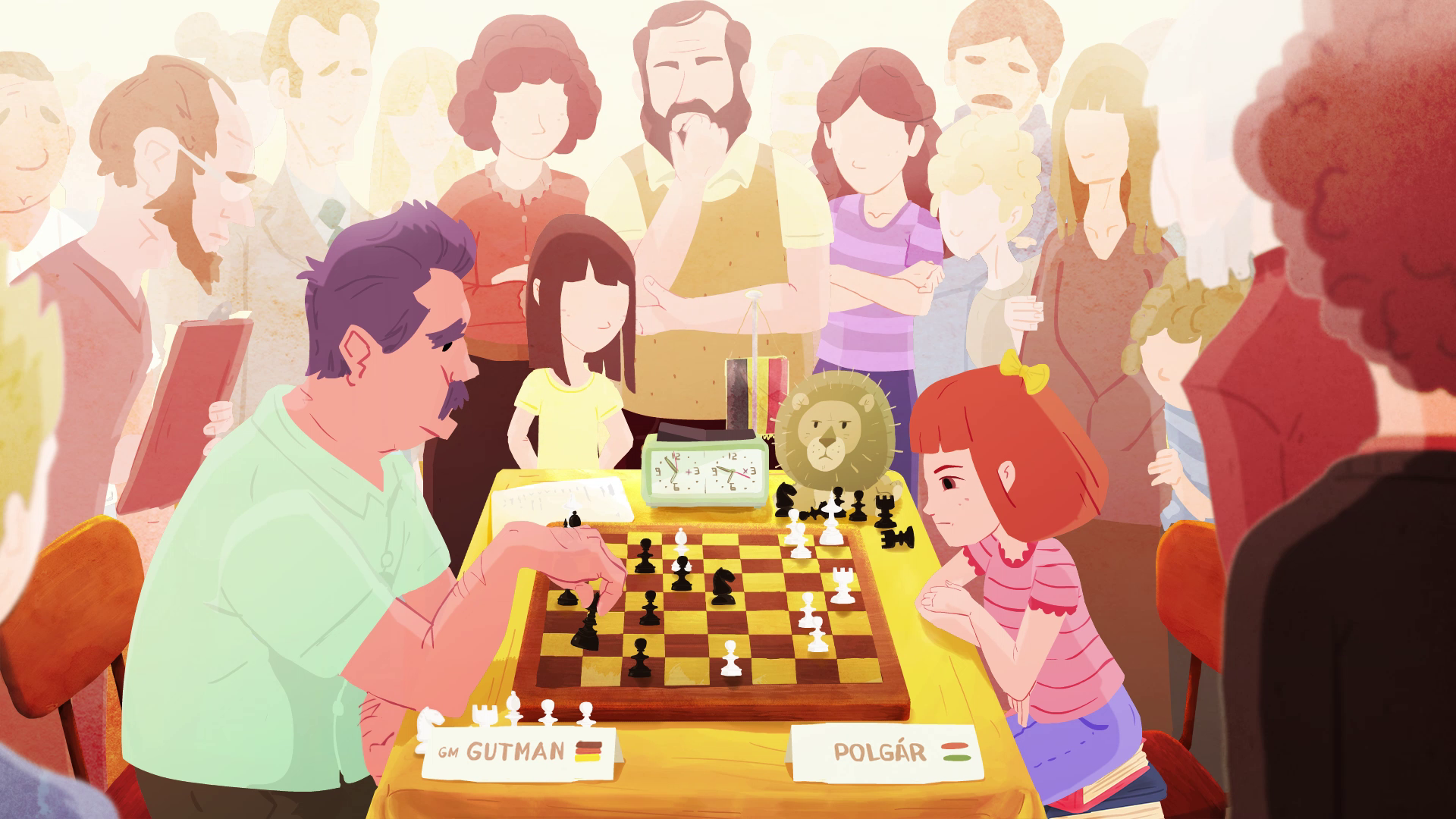
Netflix chess drama “The Queen’s Gambit,” has been on the platform’s top series list since its release. The series, which follows the story of Beth Harmon, a Kentucky orphan, and her rise as a chess prodigy in the 1950s and 1960s, shows how a woman can excel in the ruthlessly competitive, male-dominated world of chess, which also brought to light the lives of the famous Hungarian chess player sisters, the Polgár girls.
Although the series “The Queen’s Gambit” – named after a chess opening – was based on Walter Tevis’ 1983 novel, some argue that it resembles the lives and chess careers of the Polgár girls, and especially Judit Polgár, the youngest to get the Grandmaster title. However, they were born in the 70’s, two decades “after” fictional character Beth Harmon took on the also fictional Russian champion Vasily Borgov in Moscow. At the time, in real life, women weren’t even allowed to compete in the World Chess Championship – until the 1980s. In addition, Judit Polgár and her sister Zsuzsa only received their Grandmaster titles in 1991. However, whether based on one of the Polgár girls or not, the series has once again put the spotlight on the famous Hungarian chess prodigies.

Beth Harmon, the protagonist of ‘The Queen’s Gambit’ (photo: via Netflix)
In real life, the woman synonymous with the world’s best chess player is Judit Polgár, a Hungarian Grandmaster – the highest title a chess player can attain apart from world champion. In her prime, Judit Polgár was among the top ten in the world, and she was the first and so far only woman to achieve this. She was invited to top tournaments and played on equal footing with the best men in the chess world. Polgár refused to participate in women’s tournaments, preferring to compete against men instead. In 1991, at 15 years old, she became the youngest ever grandmaster, breaking the record previously held by former World Champion Bobby Fischer. She defeated Magnus Carlsen, Anatoly Karpov, Kasparov, and Spassky. She was the youngest player ever to break into the FIDE top 100 players rating list, ranking No. 55 in the January 1989 rating list at the age of 12. She is the only woman to qualify for a World Championship tournament, having done so in 2005.
Judit and her two sisters were part of an educational experiment carried out by their father László Polgár, in an attempt to prove that children could make exceptional achievements if trained in specialist subjects from a very early age. The father’s thesis was that “geniuses are made, not born.” The girls were educated at home, with chess as the specialist subject.
Judit Polgár’s sisters also won serious competitions; Zsuzsa Polgár for example, brought home the U.S.’s first Chess Olympiad medal and ranked among the top three women players in the world for 24 years. Zsuzsa also holds the Grandmaster title, while the third sister Zsófia holds the International Master and Woman Grandmaster titles.
Fact
There is a parallel between the story of Beth Harmon and the real life of Judit Polgár. In a 1989 Playboy interview, then reigning world champion Garri Kasparov said that “there is real chess and women’s chess. Some people don’t like to hear this, but chess does not fit women properly. It’s a fight, you know? A big fight. It’s not for women. Sorry. She’s helpless if she has men’s opposition. I think this is very simple logic. It’s the logic of a fighter, a professional fighter. Women are weaker fighters.” Judit Polgár and Garry Kasparov played seven classical games against each other, between 1994 and 2001. The overall score was clearly in favor of Kasparov: he won five games, two ended in a draw. However, at a rapid tournament in Moscow, in 2002, Judit Polgár managed to win against Kasparov. Years later Kasparov apologized for his comments. Now they are friends.
Zsuzsa Polgár said in an interview that she thinks the series’ protagonist, Beth is a composite of Bobby Fischer, the eccentric American who beat the Soviet champion Boris Spassky, and Lisa Lane, the U.S. Women’s Champion who graced the cover of Sports Illustrated as part of a 1961 cover story. She said that although “Lisa Lane never achieved anywhere near that kind of success, she was glamorous and lived a, let’s say, active life like Beth Harmon did.”
featured photo: via Judit Polgár (Tímea Jaksa)


